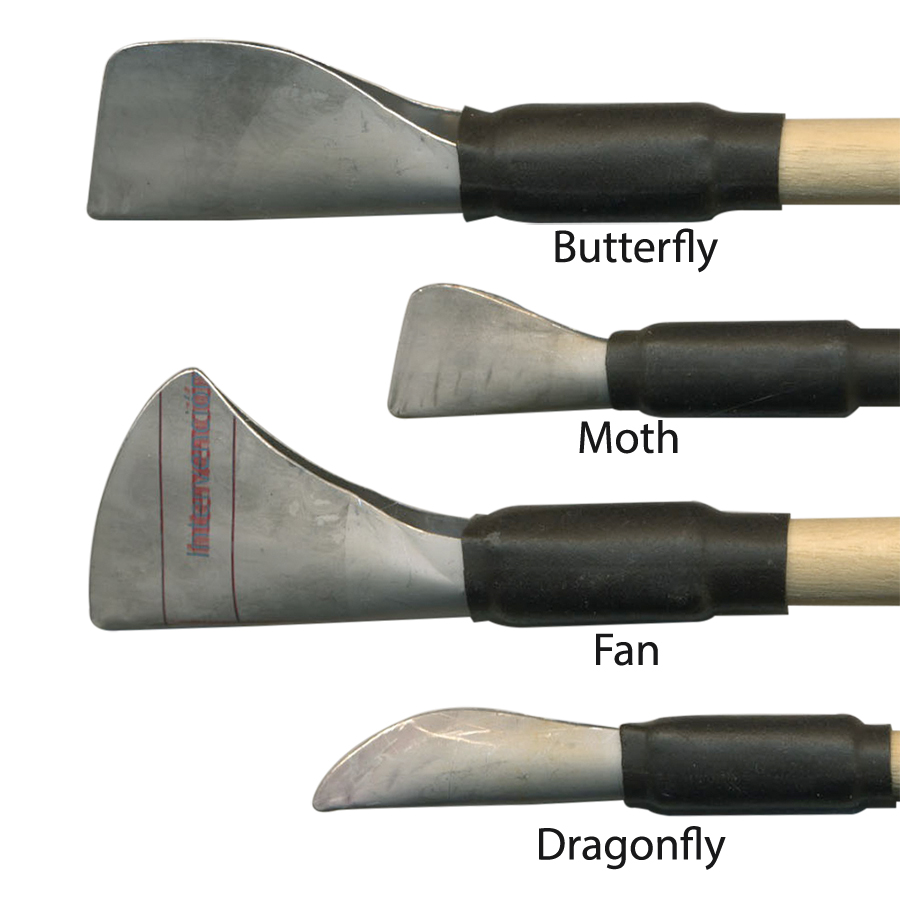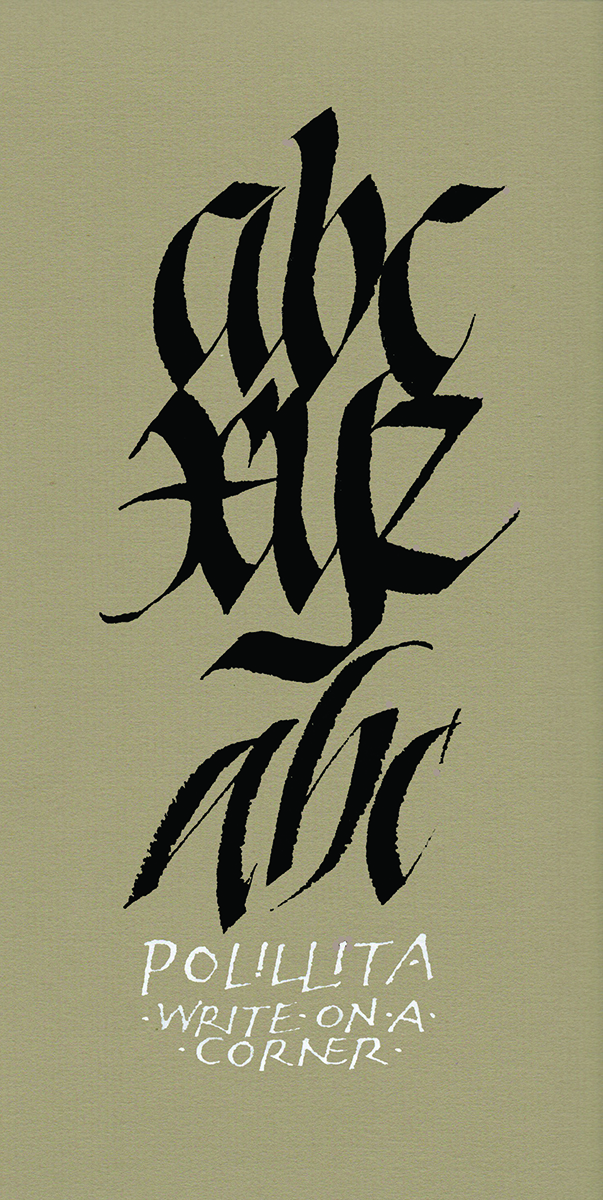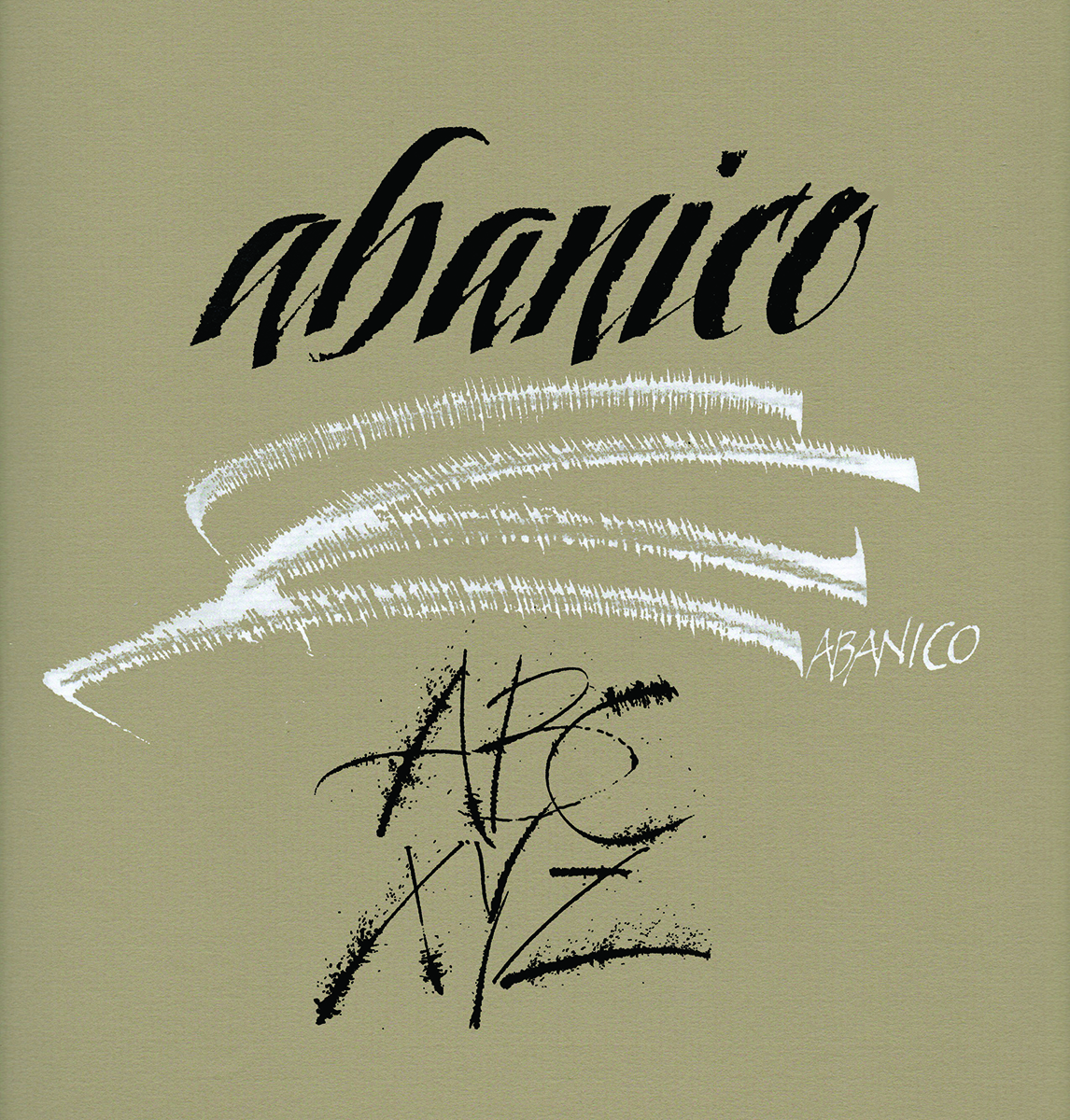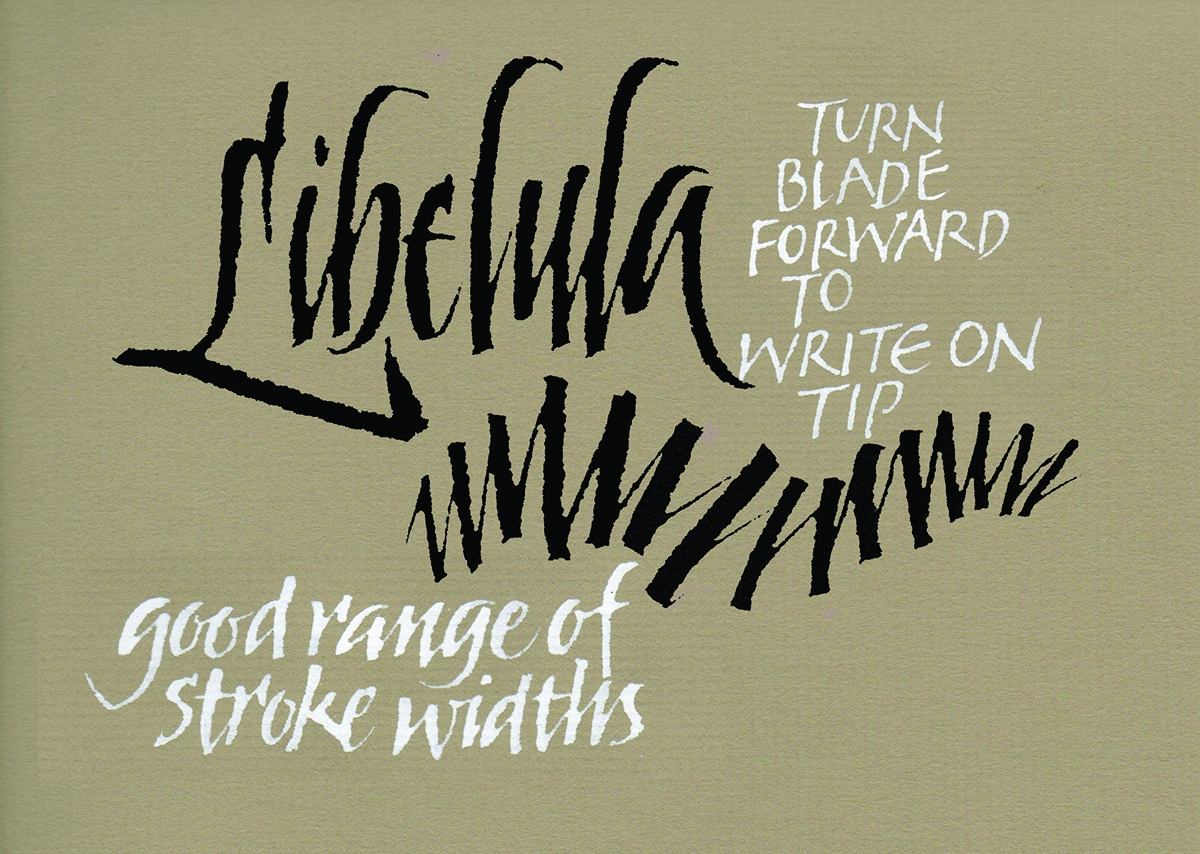Luthis Folded Pens

The Luthis Libélula (Dragonfly) pen. Overall length: 15.5 cm (6.1")
By Carol DuBosch. I first learned of these pens from Argentina when Silvia Cordero Vega wrote about them in Letter Arts Review 28-1. She told of their use in one of her artworks, which was featured on the cover of the issue: “I wanted very expressive calligraphy, with a visceral feel . . . . I used an extra-large Luthis ruling pen, which would allow me to make very large strokes with good control and firmness. Of course, if I used this large ruling pen with a very thin medium on a rough and irregular surface, my marks would not be very uniform. But they would have a more interesting and evocative personality.” There were photos of Sylvia using the pen and also of her lettering done with it.
My interest was piqued, as I am always eager to try out new writing tools, but as far as I knew, the pen was not available in the United States. Fortunately, several months later, John Neal offered to send me samples to test (he is now stocking the pens).
All the Luthis pens have a hand-cut aluminum nib attached to a plain, cylindrical wood handle. There is nothing fancy about their construction; my excitement with them comes from how they write, not how they look. They are lightweight, and the metal connects well with the paper and feels strong and nimble. Four pens stood above the rest: Mariposa, Polillita, Abanico, and Libélula. The names are the Spanish words for butterfly, (little) moth, fan, and dragonfly, respectively. (The Spanish names are stamped on the wooden handle.)
My thoughts on these four Luthis pens follow. I have also created four panels of lettering examples, one for each pen, so you can see some of the kinds of strokes that can be made with them.

These Luthis pens have widely different writing tips. From top:
Mariposa (Butterfly), Nib length: 3.4cm (1.34”)
Polillita (Moth), Nib length: 2.0cm (.79”)
Abanico (Fan), Nib length: 3.5cm (1.38”)
Libélula (Dragonfly), Nib length: 2.8cm (1.10”).
(While the names in English are the same – Butterfly, Moth, Dragonfly – these pens are different from the ones Jim Chen offered a fair number of years ago.)
Mariposa (Butterfly)
This is an amazing tool. When using the broad edge at the end of the pen, you get two different results depending on how you orient the pen. If held with the writing on the dowel facing up, it acts like a folded pen, a cola pen, or a calligraphic ruling pen. If held with the label facing down, it acts like an Automatic pen (or similar large edged-pen), though it is less stiff than an Automatic pen. When held with the folded part of the nib up and the open side of the nib to the paper, the pen writes on the rounded corner very expressively, with somewhat of a monoline stroke rather than the standard thick and thin strokes. Paper size of sample below is approximately 8.5 x 7.5 inches.

The Mariposa is akin to having a Swiss Army knife in your toolkit, as it is an "omni-pen" that can produce a variety of strokes.
Polillita (Moth)
The Polillita, also an amazing tool, is a smaller version of the Mariposa and provides the same writing options, but on a slightly smaller scale. Paper size of sample below is approximately 5 x 9.9 inches.

Abanico (Fan)
This pen creates marks similar to folded, cola, and calligraphy ruling pens. It is easy to use and might be a good choice for someone new to this realm of writing. I was able to write in a variety of sizes (using different edges of the pen) and could dependably produce spitting strokes with the pen. Paper size of sample below is approximately 8.5 x 8.9 inches.

Libélula (Dragonfly)
I like this pen a lot! The curve is just right. It spits and stutters, writes in a variety of sizes, and allows me to change the style of writing quickly. It is a pen I can rely on and is the best of the bunch. Paper size of sample below is approximately 7.3 x 4.7 inches.

Carol DuBosch, a calligrapher in Portland, Oregon, was introduced to nibs & ink in 1959 as a high school art student. She teaches college-level and private classes in Portland and workshops throughout the United States and overseas. Carol directed three International Calligraphy Conferences in Portland, each time bringing more than 500 scribes together for a week of study and sharing. She is interested in every aspect of the field of calligraphy, from formal invitations to writing on walls, and is a lifelong learner looking forward to the next new thing.
www.caroldubosch.com
www.instagram.com/caroldubosch
Recent Posts
-
Calligraphy Wisdom: Advice from Seasoned Artists & Answers for Beginners
At John Neal Books, we love connecting with the calligraphy community and sparking insightful di …Mar 11th 2025 -
October 2024 - New Products
&n …Nov 8th 2024 -
Paul Antonio wants your help!
Paul Antonio is putting out a call to Copperplate calligraphers of all skill levels. Any in …May 22nd 2024




